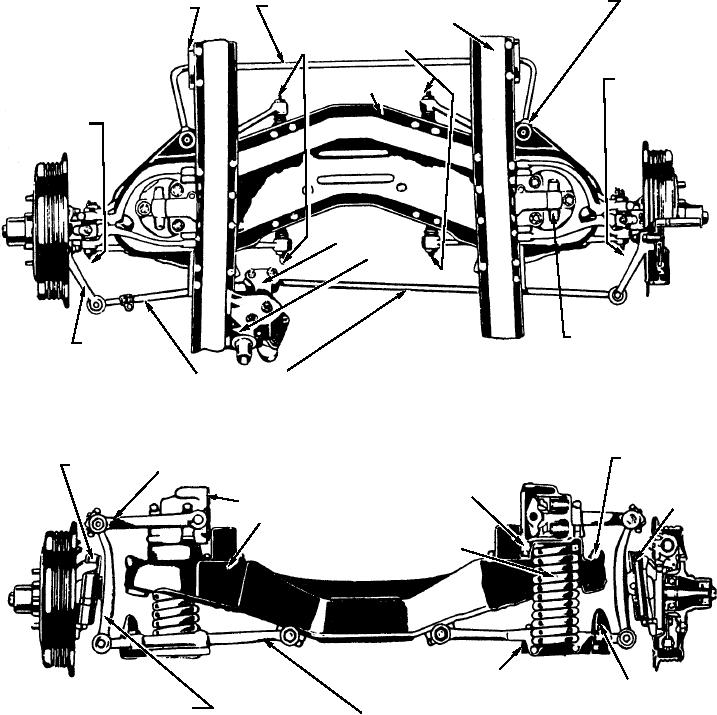
STABILIZER SHAFT MOUNTING
STABILIZER ATTACHMENT TO
AT LOWER SPRING SEAT
STABILIZER SHAFT
SIDE RAIL (RUBBER-INSULATED)
SIDE RAIL
GREASE FITTINGS
FRONT
GREASE
CROSSMEMBER
FITTINGS
GREASE
FITTINGS
PITMAN ARM
STEERING
GEAR
TOP MOUNT
STEERING
OF SHOCK
KNUCKLE ARM
DUAL TIE RODS
REBOUND
STEERING
UPPER CONTROL ARMS (UPPER WISHBONE)
BUMPER
KNUCKLE
UPPER SPRING
SEAT
SHOCK ABSORBER
KING PIN
FRONT CROSSMEMBER BRACE
COIL SPRING
LOWER SPRING SEAT
COMPRESSION
BUMPER
STEERING KNUCKLE SUPPORT
LOWER CONTROL ARMS (LOWER WISHBONE)
ASf02004
Figure 2-4.--Coil spring suspension.
Most shock absorbers used today are hydraulically
repaired; it can only be replaced when it becomes
operated, and their operation is easy to understand.
inoperative.
When the springs are flexed, liquid hydraulic fluid
Shock absorbers are usually attached to the
within the shock absorber is forced through a small
vehicle, as shown in figure 2-5, view A. Rubber
opening by a piston. Since liquids cannot be
mountings are used to fasten shock absorbers to the
compressed, the movement of the piston is controlled
frame and axle to eliminate wear and noise. Most
by the rate of flow of the hydraulic fluid through the
shocks can be replaced by removing the hardware that
opening. The tube shock absorber, as shown in figure
holds them in place. The hardware may be bolts at both
2-6, is used on automotive equipment and most types
ends of the shock absorber or, in some styles, the shafts
of support equipment requiring shocks. The tube shock
are threaded and washers and nuts hold them in place.
absorber is a self-contained unit that cannot be
2-5

